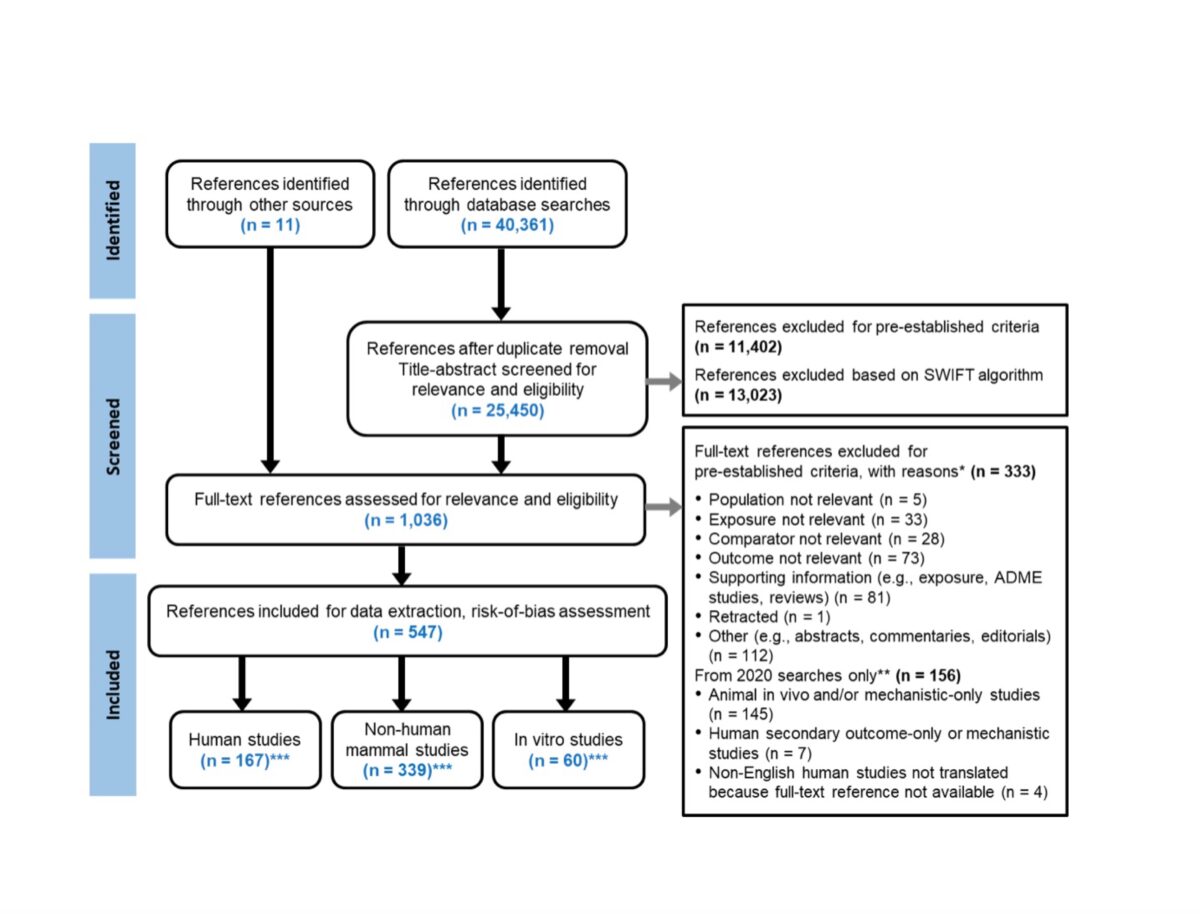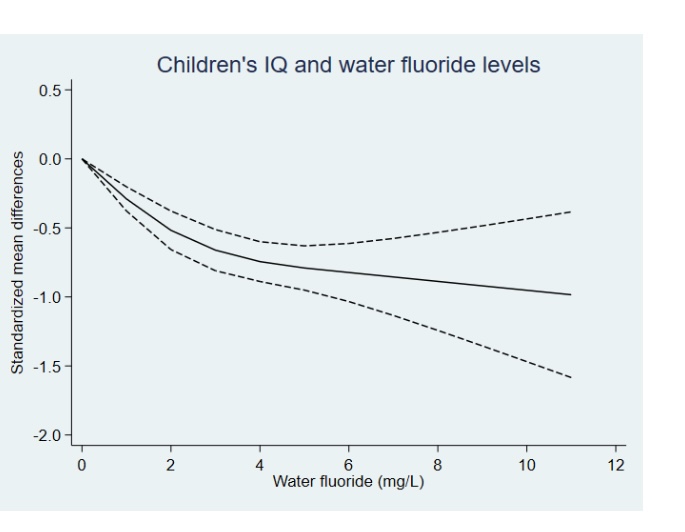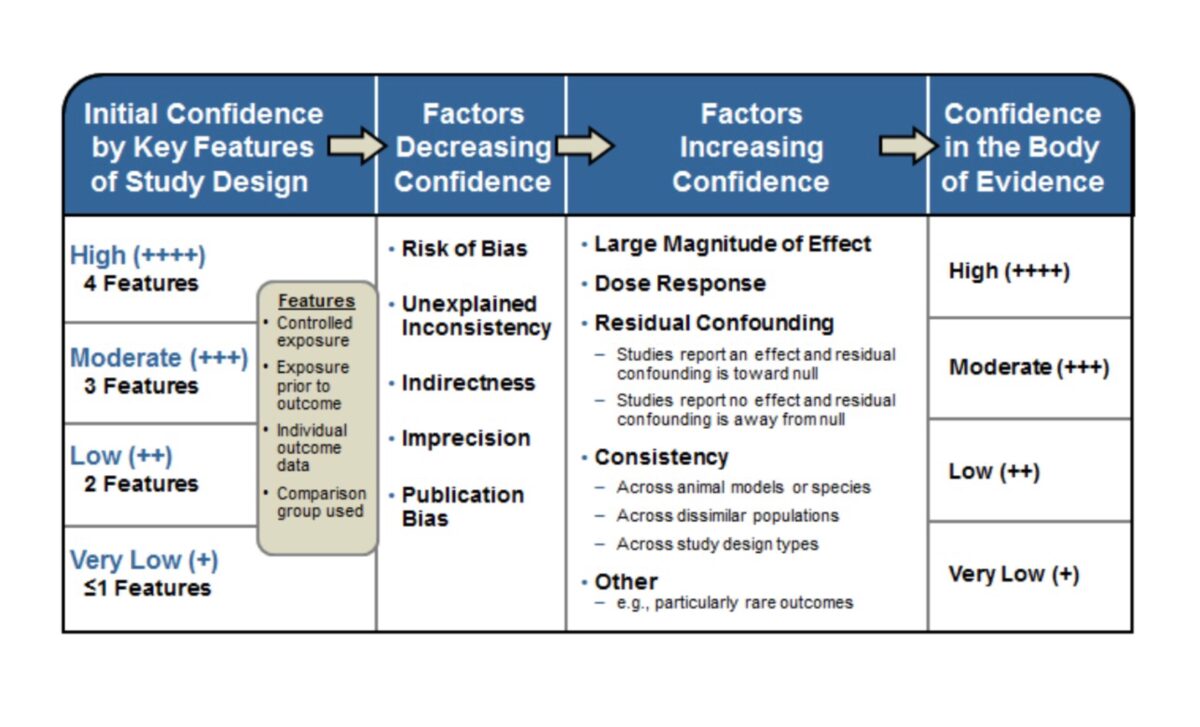The Bombshell Report That Could Change Our Water
To fluoridate or not to fluoridate? That is a question that may soon be weighed across the United States.
The future of U.S. community water fluoridation programs hinges largely on the National Toxicology Program’s (NTP’s) six-year systematic review, a report that takes a critical look at the available science but has become mired in government interference and controversy.
Draft releases of the report—revealed as part of an ongoing lawsuit—affirm the science that links fluoride to lower intelligence in children. The report’s findings support multiple studies concluding that fluoride is a neurodevelopmental toxin.
The “NTP Monograph on the State of the Science Concerning Fluoride Exposure and Neurodevelopmental and Cognitive Health Effects: A Systematic Review,” as it’s officially called, has been beset with unprecedented delays in a contentious battle over statistics, verbiage, and final conclusions.
The report, or monograph, is significant because it assesses all research and studies regarding the neurotoxic effects of fluoridated water exposure and raises questions about long-term health effects.
A two-year delay in the release of this pivotal monograph has become a major element in an ongoing lawsuit brought against the Environmental Protection Agency (EPA) by the Fluoride Action Network (FAN), which seeks to ban chemical fluoride additives from the U.S. public drinking water supply.
Between September 2019 and February 2022, the report went through five separate peer-review processes and three revised draft iterations that incorporated all suggestions and comments from all five peer-review processes.
Despite the extensive peer reviews and draft revisions, internal Centers for Disease Control and Prevention (CDC) emails revealed government officials blocked the release of the May 2022 draft that was considered final by the NTP.
Court documents show that an undisclosed working group then started a review process to “adjudicate” undisclosed comments made by “agency subject matter experts.”
The May 2022 draft wasn’t made public until March 15 and was only released as a result of months of legal motions, subpoenas, extensive negotiations with the U.S. Department of Justice (DOJ)—which is representing the EPA in court—and a court order.
The NTP’s Controversial Findings
The National Toxicology Program (NTP) is an interagency government program run by the Department of Health and Human Services to protect the American public from toxins. The NTP is under the department’s National Institute for Environmental Health Sciences.
The NTP started its fluoride toxicity review in 2015, according to minutes of a meeting of the program’s Board of Scientific Counselors in December 2015.
Dr. Kristina Thayer, director of the NTP Office of Health Assessment and Translation, told the board that the review would evaluate fluoride exposure and the potential for developmental neurobehavioral effects. She highlighted findings from the 2006 National Research Council report and a 2015 review done for Ireland’s Department of Health, which highlighted potential neurological effects.
The NTP’s review on fluoride looked at data from more than 500 studies on fluoride exposure and neurotoxicity that included more than 150 human studies as well as non-human mammal and vitro studies. From NTP Sept 2022, Figure 2, Study Selection Diagram
From NTP Sept 2022, Figure 2, Study Selection DiagramThe meta-analysis in the most recent version of the NTP draft review concluded that “52 of 55 studies reported an inverse association between fluoride exposure and children’s IQ.”
In other words, the more fluoride children are exposed to, the lower their IQ. The estimated drop, based on a range of studies, is approximately seven IQ points.
Although a drop in seven IQ points may not seem like a big deal, it has detrimental effects on the population as a whole, explained Christine Till, a clinical neuropsychologist and adjunct scientist at the neuroscience and mental health program at Sick Kids Hospital in Toronto, in a May presentation. Till was involved in one of the most recent studies on fluoride as part of Health Canada’s Maternal-Infant Research on Environmental Chemicals research platform.
Till stressed that just a five-point decrease in a population’s IQ would increase the number of people classified as intellectually disabled to 9.5 million from 6 million and the number of people considered gifted would drop to 2.4 million from 6 million.
To understand the significance of that cost, it helps to consider the effects at scale. A May 2021 review published in the journal Children titled “Monetary Valuation of Children’s Cognitive Outcomes in Economic Evaluations from a Societal Perspective: A Review” estimated the “implied lifetime monetary valuation of an IQ point in the United States” to be between $10,600 and $13,100. In other words, if 100 million people lost five IQ points, it would amount to $5.3 trillion to $6.55 trillion in total lost income.
Another concerning finding in the review is that there is no obvious safe threshold for fluoride exposure.
Till stressed that data in the NTP report show that there is a drop in children’s IQ even between the lower ranges from zero to 2.0 mg/L of urinary fluoride levels. Measurement of fluoride levels in urine is a method used for the estimation of fluoride exposure levels.

From NTP Sept 2022, figure 17
“The potential for adverse health effects of early-life exposure to fluoride are of huge public health significance,” she said.
Dr. Jack Kall, executive chair of the Board of Directors of the International Academy of Oral Medicine and Toxicology, noted other concerning findings of the review in a recent interview on “Discovering True Health.”
“Human epidemiological evidence supports a conclusion of ‘moderate confidence’ that fluoride is a developmental neurotoxin,” Kall said.
Confidence ratings in the report range between one and four, with four being the highest confidence. Moderate confidence is three out of four.
 Figure 1. Assessing Confidence in the Body of Evidence
Figure 1. Assessing Confidence in the Body of EvidenceKall noted that a moderate ranking is where serious scientists start asking some very hard questions around safety, such as “If there is that level of confidence, shouldn’t we be implementing some changes around exposure to this [fluoride]”?
Kall also stressed that the review revealed people are exposed to enough fluoride to experience harm, according to the research.
“Fluoride exposures experienced by pregnant women and children in the U.S. today are within the range where human studies have found reduced IQ,” Kall said.
Unprecedented Delays, Lack of Transparency
What’s unique about the NTP—normally—is its track record of transparency. A large number of their most recent reports had a public peer-review process lasting a few days, and court documents note that drafts of NTP reports were always provided to the public.According to court records, the government insisted the May 2022 draft of the report—which was the draft considered by the NTP as final—“should not be released to the public.” Emails obtained through the lawsuit, however, show that the American Dental Association, the nation’s largest lobbying group on pro-fluoride issues, had already been provided with a copy.
The association went on to urge the NTP to exclude any statements of neurotoxicity of fluoride from the report, saying such claims aren’t supported by scientific evidence.
According to an NTP press release, the CDC, FDA, and NIH experts expressed concerns that their previous comments on the meta-analysis weren’t adequately addressed, although the NTP authors disagreed with the agency experts’ comments and criticisms in many cases. Court documents allege that these particular comments may have been what the undisclosed working group was charged to adjudicate.
The names of the BSC working group and agency comments were disclosed per court order and subpoena although agency names attached to the comments were redacted.
Subsequent to the release, plaintiffs’ attorneys reached an agreement with the EPA’s attorneys that they would provide them a “Key” that would unlock the redacted sections and identify the agencies corresponding to comments and criticisms.
The Epoch Times has obtained a copy of the redacted agency names which include: Centers for Disease Control and Prevention (CDC), National Institute of Dental and Craniofacial Research (NIDCR), National Institute of Environmental Health Sciences (NIEHS), U.S. Food and Drug Administration (FDA), Eunice Kennedy Shriver National Institute of Child Health and Human Development (NICHD), Office of the Assistant Secretary for Health (OASH), National Institutes of Health/Office of the Director (NIH/OD)
Although actual employee names were not obtained, plaintiff attorney Michael Connett told The Epoch Times in an email that “the main criticisms came from [ the ] CDC and NIDCR.” Both agencies are linked to promoting the water fluoridation program in the U.S.
A Timeline of the NTP Fluoride Report
The timeline of events for the NTP report on fluoride is as follows:2015: A meeting of the NTP’s board reveals a program is being developed to review the potential neurotoxicity of fluoride.
2016: The NTP publishes its first report on fluoride, titled “Systematic Literature Review on the Effects of Fluoride on Learning and Memory in Animal Studies.”
September 2019: The NTP publicly releases a draft of its second report on fluoride, titled “Systematic Review of Fluoride Exposure and Neurodevelopmental and Cognitive Health Effects.” The review looks at both animal and human studies, but focuses more on human studies.
September 2019–March 2020: The second report draft is peer-reviewed by the National Academies of Sciences, Engineering, and Medicine (NASEM).
September 2020: The NTP incorporates NASEM’s suggestions from the peer review and released a revised report.
September 2020–February 2021: A second peer review is conducted by NASEM on the revised 2020 report.
July 2021–July 2022: The report is reviewed by various Department of Health and Human Services entities.
November 2021: The NTP incorporates NASEM’s comments from the second-round peer process and completes another revised 2021 draft.
November 2021–February 2022: The 2021 draft undergoes a peer-review process by five external nongovernment scientists.
January 2022: The NTP states, “Pending general reviewer agreement with our document, we anticipate public availability of a revised final state of the science report by the end of March.”
May 2022: The NTP incorporates all comments from all five external peer reviewers and completes a finalized copy of the report. It decides to publicly release the report on May 18, 2022.
June 2022: Government officials decide to put the report on “hold,” according to emails obtained via the Freedom of Information Act.
October 2022–May 2023: Another review is done by an undisclosed working group set by the NTP’s board to adjudicate 325 comments and criticisms on the report received from external peer reviewers and federal agency experts.
March 15, 2023: After months of legal motions, subpoenas, extensive negotiations, and a court order, the National Institute for Environmental Health Sciences publicly releases the NTP’s final report that was intended to be published in May 2022. The final report include a September 2022 marked-up “working” draft with reviewers’ comments and NTP authors’ responses, with names redacted.
The September 2022 NTP version was for the most part identical to the May 2022 version with very few, if any, meaningful changes although it does contain extensive comments from some of the agency reviewers along with NTP’s responses.
The Story of Asbestos
Kall noted that the last time major delays like this were witnessed in the process of an NTP review was with the now-highly regulated cancer-causing substance asbestos. However, “the delays have been much worse with the NTP report on fluoride,” he said.Similarly to the chemical fluoride additive, asbestos is big business in the United States.
Despite the known health hazards documented as early as 1898, a 2023 asbestos global market report says the global asbestos market size grew from $950 million in 2022 to $1.01 billion in 2023 and is expected to grow to $1.53 billion in 2027.
More than 60 countries have banned asbestos, but the United States has only partially banned it. In 2020, the EPA found an unreasonable risk to human health and has proposed to ban it under the Toxic Substances Control Act but hasn’t yet done so.
The 2022 market size of fluorosilicic acid, which is the chemical fluoride additive most used in 75 percent of the U.S. public water supply, was $1.1 billion and expected to grow to $1.57 billion by 2023, per a Reports and Data press release.
Government Interference
Many doctors, scientists, and experts witnessing the prolonged process say the government has tried to quash and dilute the report for political purposes. The possibility that a major public health program had unintended side effects is no doubt a significant issue for those that supported it as mounting evidence of neurotoxicity came to light.Internal CDC emails obtained through a Freedom of Information Act request by FAN’s attorney Michael Connett reveal how authorities responded to the unreleased May 2022 draft of the Fluoride Toxicity Report.
“We have set May 18, 2022, for publication of the monograph. The monograph will be posted to the NTP website, and we will email a notice of the posting to NTP listserv subscribers,” Mary Wolfe told CDC officials in a May 11, 2022, email. Wolfe is the deputy director for policy and communication at the Division of Translational Toxicology, which functions somewhat like a communications arm for the NTP.
Several back-and-forth emails ensued from CDC official Karen Hacker regarding clarification around whether the report publication had National Institutes of Health clearance and whether it also would be going through a Health and Human Services interagency review.
Later that same day, Wolfe clarified, “My reply noted that we believe the current findings, as stated in the monograph, reflect the scope of our evaluation and the available scientific literature, and no revision is needed.”
Hacker pushed back, wanting to set up a meeting as soon as possible “to discuss the rollout and messaging.”
Then something happened behind the scenes that wasn’t captured in the emails released.
A June 3, 2022, email from Nicole Johnson, associate director for policy, partnerships, and strategic communications at the CDC Division of Oral Health, stated, “The latest we heard (yesterday) is that ASH Levine [Assistant Secretary of Health Rachel Leland Levine] has put the report on hold until further notice.”
The May 2022 monograph draft on fluoride wasn’t released until March 15, after a subpoena and court order from Judge Edward M. Chen during the course of the current lawsuit against the EPA.
One Step Closer to Publication
After the forced release of the draft, two public meetings were held, one on May 4 and the other on May 16, where the NTP’s board of counselors voted unanimously to accept the recommendations of their working group and move forward with the completion process.NTP Director Richard Woychik, who is also director of the National Institute for Environmental Health Sciences, is now ultimately responsible for deciding on the final publication. He said in his closing remarks that he will be working with the members of the working group and the NTP authors to make revisions and try to get the report to publication as quickly as possible, hopefully in the next several weeks.
Woychik mentioned that he would also be consulting with their partner organizations, the U.S. Food and Drug Administration and the CDC, in the finalization process.
Read Part 1 – The Renewed Scientific Opposition to Water Fluoridation
Read Part 2 – Uncovering the Differences: Why Natural Fluoride and Synthetic Fluoride Are Not Created Equal
Read Part 3 – Fluoride: A Miracle Cure for Cavities, a Poison, or Both
Read Part 4 – Health Effects of Fluoride: The Science
Read Part 5 – New Studies Link Fluoride to Reduced IQ and ADHD in Children
Read Part 6 – Hidden Fluoride in Our Food, Medicine, and Environment
Read Part 7 – Arsenic: A Known Contaminant in Fluoride Added to the US Water Supply
Read Part 8 – Fluoride Lawsuit Against EPA: Alleged Corruption, Shocking Under Oath Federal Statements
Reposted from: https://www.theepochtimes.com/health/the-bombshell-report-that-could-change-our-water_5281893.html

.png)

.png)





Comments
Post a Comment